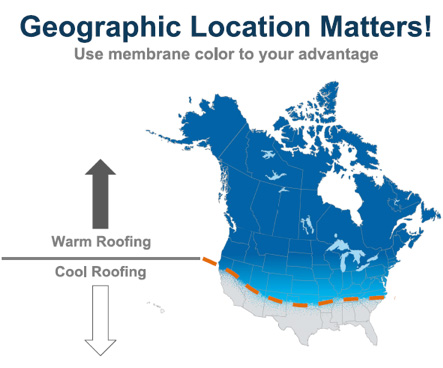
Black or White Roof Membrane
by Karl Wagenhoffer III
This April the Lehigh Valley Chapter of IFMA had Versico representative, Tim Kenna of Exterior Building Solutions, compared the energy performance values of black and white roof membranes. PPL of Allentown was kind enough to host the event in their beautiful facility. This AIA presentation explained as with many simple questions the devil is in the details and consulting with a trusted expert when making any major decision is critical to understanding its impact.
The first consideration in determining a roof membrane type or color is understanding if your structure resides in a cold or warm climate. PA is a cold climate state and EPDM owns the market share in both cold and warm climate areas. TPO roofing is a close runner up in warm climate geographies. Warm and cold weather climates are and ASHREA standard determined by how many warm weather days and cold weather days are in a calendar year. You can learn more about how warm and cold weather days are calculated here.

Philadelphia has five times as many heating degree days as cooling degree days. Cooling degree days are an ASHREA standard of 68° or higher. Global warming indicators illustrate that cooling degree days are increasing year over year. This means that the average number of days needed to cool your building will be increasing year over year.
While the focus is on comparing white roofs to black roofs, it is apparent that the roof is less of a factor in the overall energy efficiency of a building than other components. The overall energy envelop of a building is better measured with more insulation in walls, roof and flooring, lighting and electrical and energy efficient doors and windows. It is also more important to ensure the roof system is installed properly. 3% of energy loss can be a result of thermal bridging due to mechanically fastening rather than fully adhering a roof system. This can also lead to other issues such as moisture build up.
In the end, the consensus is that a black roof is a better product in the northeast climate. This is especially true when installed properly. Even taking into consideration of the island effect of cities like Allentown or Philadelphia, heat may reflect better off of a white roof cooling a city, however, the heat doesn’t dissipate and still needs to go somewhere so the overall impact of climate change is moot. One way to eliminate the black vs white discussion is to ensure adequate insulation is specified to mitigate the cool vs warm membrane issue. If there is adequate R-value, the transference of heat is a non-issue.
